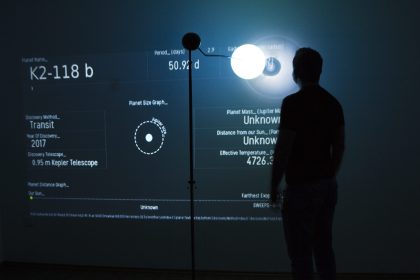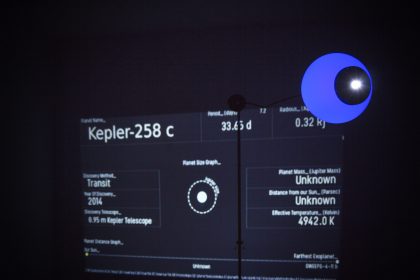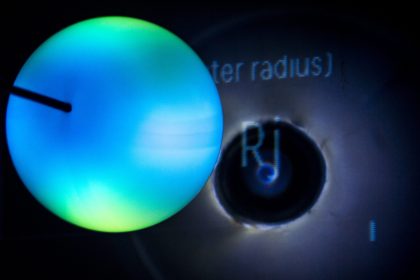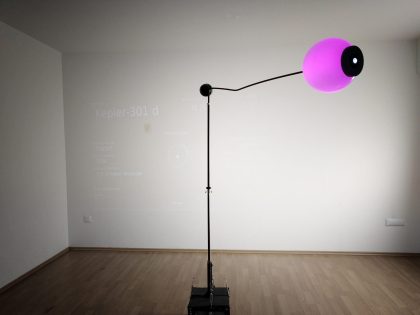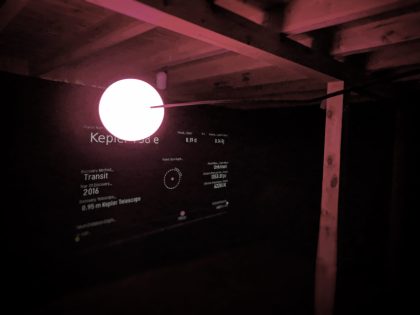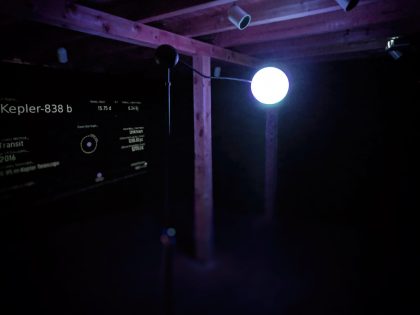(2018) Data Driven Kinetic Light & Sound Installation
Acrylic sphere, LEDs, motor, exoplanets’ data, Arduino, Raspberry Pi & custom software.
Pháros (from the ancient Greek word for lighthouse) is a data driven kinetic light installation that interprets the properties of the discovered exoplanets into movement and light.
An acrylic sphere fitted in a long bar is rotating around a vertical axis. The sphere is throwing a beam of light, like a lighthouse, while is moving in the middle of the room. The whole body of the sphere is also lighted and changing color eventually. The speed of rotation, the patterns of the light beam and the color of the sphere are defined by the properties of a randomly selected exoplanet (a planet outside our solar system that orbits a star). For example the speed of the exoplanet is defining the rotation speed of the sphere, the temperature defines the color of the sphere and the discovery method the way that light is modulated. There is a screen (or a projection) where all the data of the selected exoplanet are visualized with minimalistic/futuristic aesthetics.
Concept
Until 1992 only one exoplanet (a planet outside our solar system that orbits a star) was known. Since then, an explosion in planet discoveries occurred and as of 1 January 2018, there are 3,726 confirmed exoplanets. Most of them have been discovered by watching variations of the light that the planet or its star are emitting. These rotating objects are like lighthouse scattered in the space, guide us in our beyond Earth exploration. Pharos is imitating these exoplanets in movement, light emission and color change. The visitor will have the chance to be lit by these distant objects and observe the game of light and shadow on the walls. Like an old sailor or a future space explorer, the light again, will be the guide to this personal journey.
Sound
The sound of the installation is fragments from the oratorio “The Creation” by Joseph Haydn, extremely time stretched proportional to the speed of the selected exoplanet.
Festivals & Exhibitions:
On the Edge
Pháros was created to be exhibited for the first time at Tungenes Lighthouse at Norway as part of the “On the Edge” exhibition, a cooperation project between lighthouses in Rogaland and Stavanger Maritime Museum, where artists are invited to do art projects on lighthouses from Eigerøy in the south to Utsira in the north.
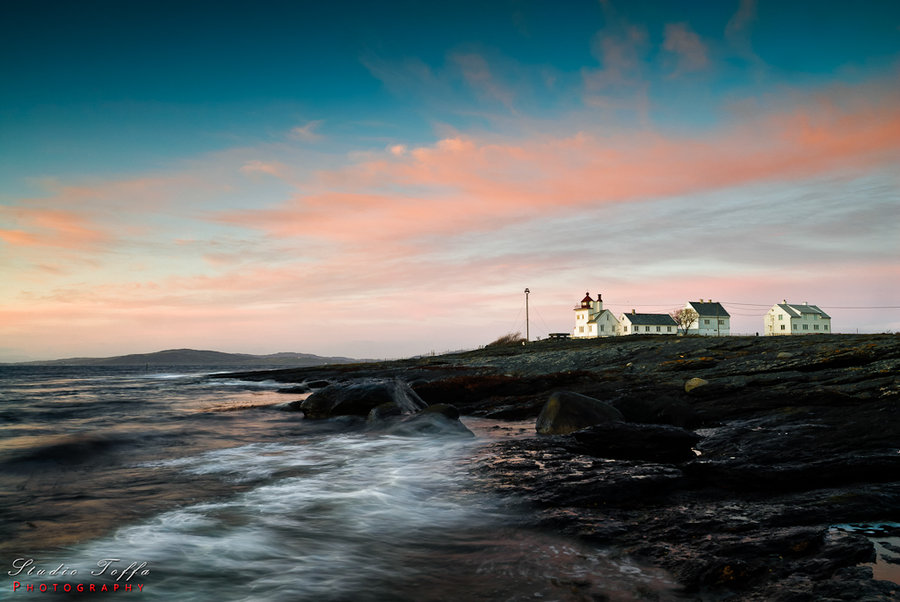
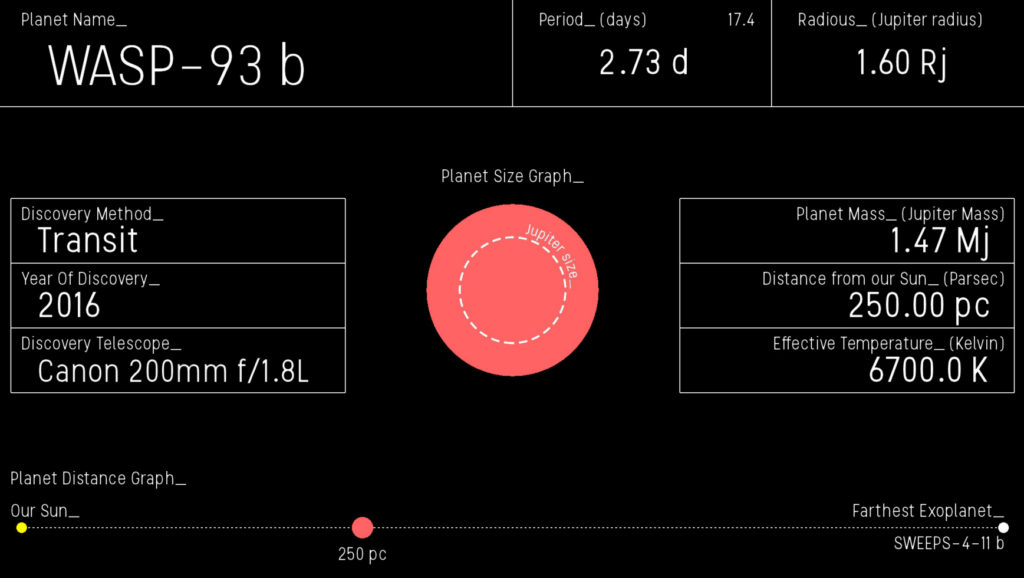
A little more science…
About 97% of all the confirmed exoplanets have been discovered by indirect techniques of detection, mainly using two methods, the radial velocity measurements and transit monitoring techniques.
Radial Velocity Method: Orbiting planets cause stars to wobble in space, changing the color of the light astronomers observe (Doppler effect). In the same way, for exoplanets that have been discovered using radial velocity method, the color of the acrylic sphere will change.
Video source NASA (https://exoplanets.nasa.gov/5-ways-to-find-a-planet)
Transit Method: When a planet passes directly between its star and an observer, it dims the star’s light by a measureable amount. For planets discovered by transit method, the light of the acrylic sphere will periodically dim.
Video source NASA (https://exoplanets.nasa.gov/5-ways-to-find-a-planet)
